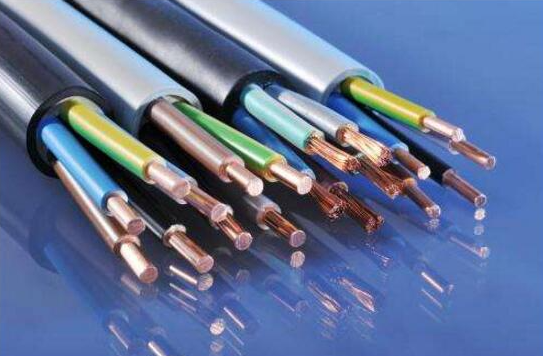Coaxial cable is a type of electrical cable that has an inner conductor surrounded by a tubular insulating layer, surrounded by a tubular conducting shield.
Many coaxial cables also have an insulating outer sheath or jacket. The term coaxial comes from the inner conductor and the outer shield sharing a geometric axis. Coaxial cable consists of coaxial conductor both inside and outside.
The two conductor is insulated with each other : The inside conductor is the copper core, the outside is woven copper shield. Electromagnetic field is enclosed between the inside and outside the conductor, so the radiation loss is small, it is seldom affected by external interference.
This property makes coaxial cable a good choice for carrying weak signals that cannot tolerate interference from the environment or for stronger electrical signals that must not be allowed to radiate or couple into adjacent structures or circuits. Common applications of coaxial cable include video and CATV distribution, RF and microwave transmission, and computer and instrumentation data connections.

Coaxial cable is designed by physical size, frequency performance, power handling capabilities, flexibility, strength, and cost. The inner conductor might be solid or stranded; stranded is more flexible. To get better high-frequency performance, the inner conductor may be silver-plated. Copper-plated steel wire is often used as an inner conductor for cable used in the cable TV industry.
The insulator surrounding the inner conductor may be solid plastic, a foam plastic, or air with spacers supporting the inner wire. The properties of the dielectric insulator determine some of the electrical properties of the cable. A common choice is a solid polyethylene insulator, used in lower-loss cables. Solid Teflon is also used as an insulator. Some coaxial lines use air (or some other gas) and have spacers to keep the inner conductor from touching the shield.
The insulating jacket can be made from many materials. A common choice is PVC, but some applications may require fire-resistant materials. Outdoor applications may require the jacket resist ultraviolet light, oxidation, rodent damage, or direct burial. Flooded coaxial cables use a water blocking gel to protect the cable from water infiltration through minor cuts in the jacket. For internal chassis connections the insulating jacket may be omitted.

Most coaxial cables have a characteristic impedance of either 50, 52, 75, or 93 Ω. The RF industry uses standard type-names for coaxial cables. Thanks to television, RG-6 is the most commonly used coaxial cable for home use. The most common impedances that are widely used are 50 or 52 ohms, and 75 ohms, although other impedances are available for specific applications. The 50 / 52 ohm cables are widely used for industrial and commercial two-way radio frequency applications (including radio, and telecommunications), although 75 ohms is commonly used for broadcast television and radio.
Coax cable is often used to carry data/signals from an antenna to a receiver—from a satellite dish to a satellite receiver, from a television antenna to a television receiver, from a radio mast to a radio receiver, etc. Coaxial Cable plays an increasingly important role in our lives.